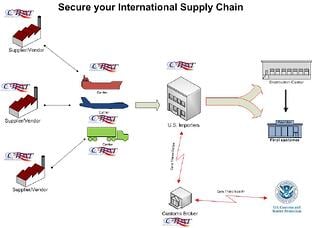Sequestration… For months and months we’ve been hearing this word. Sequestration, sequestration… It’s coming, it’s on the way, it’s impact will be huge…
Now sequestration is here presenting a serious impact for international shippers in the form of delays, especially on imported cargo. But there are 3 things you can do to alleviate the delays that this blog will cover.
To briefly cover what sequestration actually is, I turn to Dr. Paul M. Johnson’s Glossary of Political Economy Terms:
If the dozen or so appropriation bills passed separately by Congress provide for total government spending in excess of the limits Congress earlier laid down for itself in the annual Budget Resolution, and if Congress cannot agree on ways to cut back the total (or does not pass a new, higher Budget Resolution), then an “automatic” form of spending cutback takes place. This automatic spending cut is what is called “sequestration.”
In the past, Congress has kept raising the Budget Resolution, allowing large deficit increases and the country to go deeper and deeper into debt in order to avoid huge budget cuts that would negatively impact un-exempted government programs or departments’ abilities to operate.
Not this year.
The U.S. Customs and Border Patrol (CBP) is one of the many places seeing budget cuts and having to adjust the way they operate.
All of your imports have to go through the CBP’s customs clearance before you, as the shipper or importer, can receive your cargo.
On March 2nd, CBP released a document called U.S. Customs and Border Protection Cargo Priorities under Sequestration that stated “given the magnitude of the reductions, we currently estimate that there may potentially be delays up to several hours at land border crossings, passenger processing times may increase by about 50 percent, and there may be up to an additional five days added to cargo inspections at ocean ports of entry.”
Five days added to cargo inspections at ocean ports of entry?!
Yes, they said you could be experiencing five day delays in getting your cargo inspected and through customs clearance. Delays are minimal here in March as furloughs are being rolled out, but delays will increase in April and onward.
But wait.
There is a silver lining if you continue reading the CBP document: “Once furloughs commence, there may be more risk-based adjustments made regarding other inspections, with less impact to trusted travelers and trusted traders.”
Less impact to trusted traders! Who’s that? How can I be in that group? I want less impact on my imports.
Here are 3 ways to help you beat cargo delays on your U.S. imports.
1. Be C-TPAT Validated
 C-TPAT stands for Customs-Trade Partnership Against Terrorism and is a voluntary government-business initiative that builds cooperative relationships that strengthen and improve overall international supply chain and U.S. border security.
C-TPAT stands for Customs-Trade Partnership Against Terrorism and is a voluntary government-business initiative that builds cooperative relationships that strengthen and improve overall international supply chain and U.S. border security.
 CBP gives preferential treatment to their C-TPAT partners. C-TPAT members are in the trusted traders group mentioned above and receive benefits such as being less likely to receive examinations and given “front of the line” privileges when examined.
CBP gives preferential treatment to their C-TPAT partners. C-TPAT members are in the trusted traders group mentioned above and receive benefits such as being less likely to receive examinations and given “front of the line” privileges when examined.
Universal Cargo Management (UCM) is C-TPAT validated.
Shipping through UCM affords your cargo C-TPAT treatment, but it is still a good idea to get C-TPAT validated yourself as a shipper/importer. All parties being C-TPAT validated looks best to the government.
2. Pre-File Entries
This is all about getting your paperwork in early. For those of you shipping with UCM, this means returning the paperwork we give you as quickly as possible. With reduced hours from CBP, when we’re able to pre-file your entries it will help ensure CBP will have adequate time to get through it before your import arrives and avoid potential delays.
3. Double Check for Accuracy
We can’t stress enough how important it is for packing lists and import documents to be complete and accurate.
As your freight forwarder, we handle most of the paperwork for your imports (and exports), but there are still some things that you as the shipper need to fill out. When filling out forms, do a double check for accuracy and that you’ve fully completed everything.
Don’t be afraid to ask us any questions you have; that’s what we’re here for.
The last thing you want is for clerical delays to keep you from receiving your cargo imports in a timely manner.
Click Here for Free Freight Rate Pricing
—
C-TPAT logo/supply chain pictures above courtesy of the C-TPAT website.
